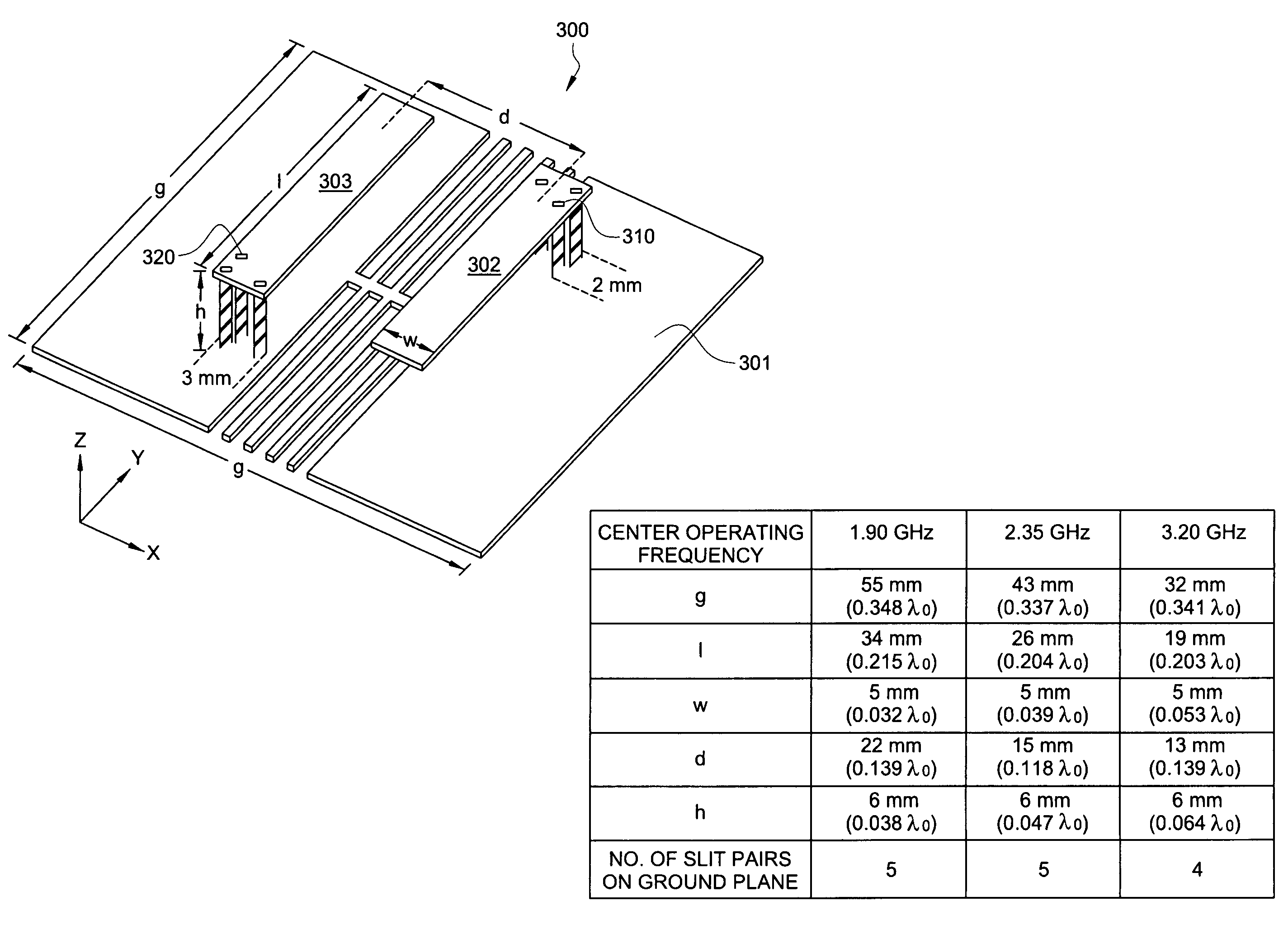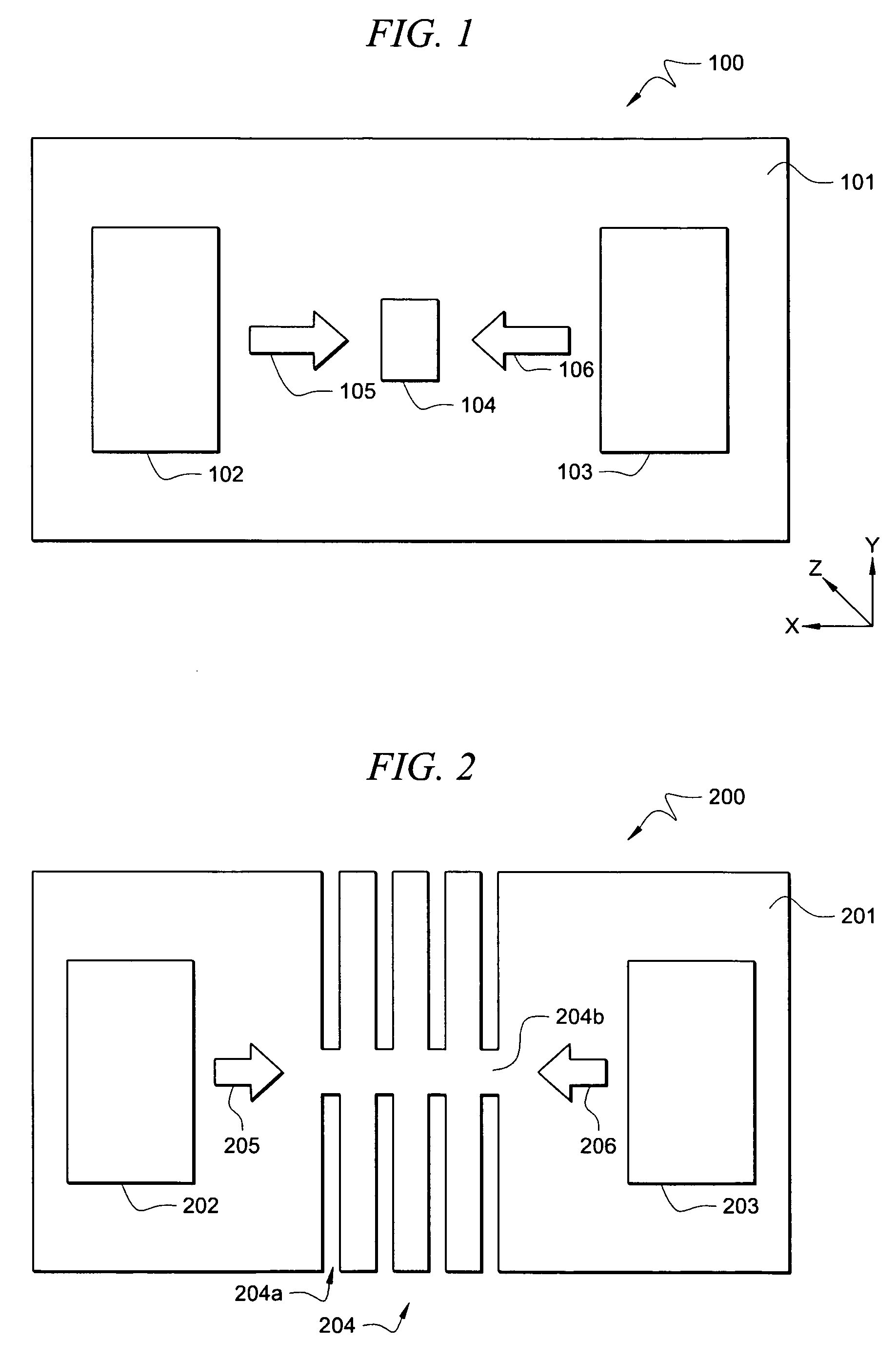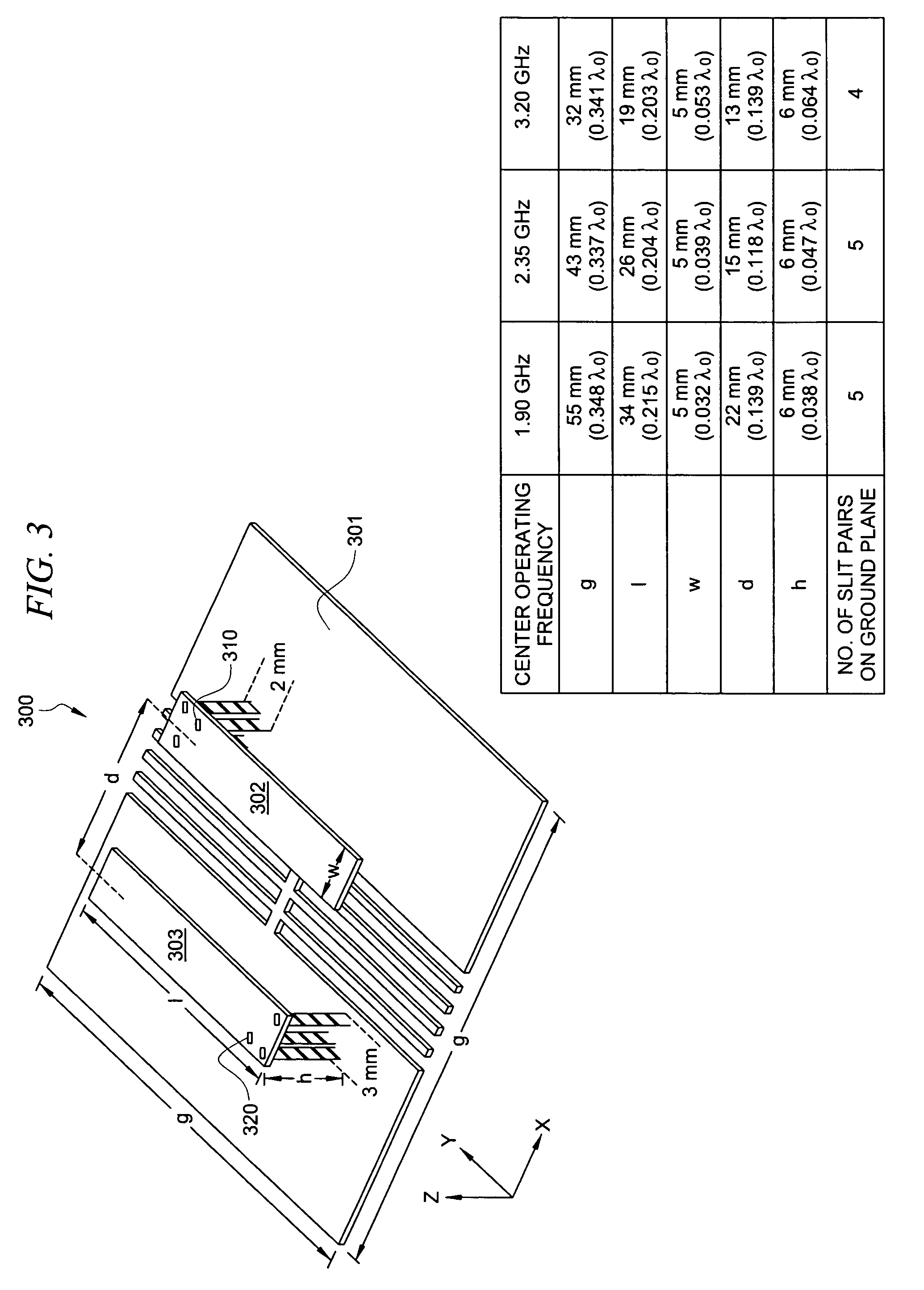Systems and methods using ground plane filters for device isolation
a filter and device isolation technology, applied in the field of system with ground planes, can solve the problems of affecting the amount of mutual coupling between antenna elements, affecting the performance of devices, and affecting the space between antenna elements in those systems, so as to reduce the effect of signals and/or eliminate the effect of signals
- Summary
- Abstract
- Description
- Claims
- Application Information
AI Technical Summary
Benefits of technology
Problems solved by technology
Method used
Image
Examples
Embodiment Construction
[0020]FIG. 1 is an illustration of exemplary system 100 adapted according to one embodiment of the invention. System 100 includes ground plane 101, which is typically a conductive layer of material disposed on a substrate (not shown), such as upon a layer of a Printed Circuit Board (PCB). In some embodiments, ground plane 101 may cover substantially the entire area of one side of a substrate or may cover a substrate only partially. However, ground plane 101 is not limited thereto, as no one structure or substrate is required in some embodiments.
[0021]System 100 further includes active components 102 and 103 disposed proximate to ground plane 101. In one example, one or more of elements 102 and 103 are antenna elements, such as patch or Planar Inverted F Antenna (PIFA) type elements disposed on a substrate with some or all of the surface area thereof overlapping in the z-axis with ground plane 101. Such antenna elements are at least partially grounded. In another example, at least on...
PUM
 Login to View More
Login to View More Abstract
Description
Claims
Application Information
 Login to View More
Login to View More - R&D
- Intellectual Property
- Life Sciences
- Materials
- Tech Scout
- Unparalleled Data Quality
- Higher Quality Content
- 60% Fewer Hallucinations
Browse by: Latest US Patents, China's latest patents, Technical Efficacy Thesaurus, Application Domain, Technology Topic, Popular Technical Reports.
© 2025 PatSnap. All rights reserved.Legal|Privacy policy|Modern Slavery Act Transparency Statement|Sitemap|About US| Contact US: help@patsnap.com



